C3: CONVERSATIONS, CONTINUITY AND CONCLUSION

The Humayun Tomb is in Nizamuddin and its Museum is among the best I’m told. I’ve not seen it yet as I live far away in a high-tech village called Bangalore. It was here in Sundar Nursery, that last year, one witnessed Kiran Nadar Foundation’s presentation of Akash Odedra, that exceptional London contemporary Kathak talent and recently attended Achal Pandya’s lecture on conservation. He is a metal conservationist trained at the National Museum Institute. AK Das and such legendary names were his margdarshak. At heart he is an harfanmologist. Harfan Maula was a rare talent who could do any given task and spoke wisely. So, when we were growing up, 40/50 years ago, anyone who could multitask, was bright, sharp, and could deliver against all odds was called an harfanmologist! Dr. Achal Pandya is that and more.
The title of the talk – CONVERSATION ON CONSERVATION was coined by him and it fascinated me because nearly 40 years ago, in late 1980s, when INTACH (the Indian National Trust for Art and Cultural Heritage) was set up and I had just finished co-ordinating the Festival of India in Sweden, I was spotted by the textile czar Martand Singh and cultural icon Pupul Jayakar, as an upcoming talent and invited to join INTACH as a director, incharge of 40 cities, which we then called Chapters. It was mostly volunteer work. Each chapter was self-motivated and on auto pilot. It was a new model for India then. Working five years for INTACH was very enjoyable and I truly had Bharat Darshan: One day in Cochin thinking how to restore Mattancherry Palace murals; next week in Bhubaneswar for Ekamra Kshetra Lingaraj temple complex. One month in Rachol Seminary, Goa and one in Jodhpur helping shape up the Mehrangarh Museum. Add textile restoration in Jaipur or Jamnagar; Benaras or Kolkata. I felt like I had done 10 PhDs in five years, that rich an experience in arts, crafts, textiles, museums and palaces.
One day I went to meet my father (we had to take an appointment to visit him, as he valued his time and was pucca about using it efficiently) and he said: hmmm, you are very busy saving many museums, palaces, collections and monuments all over the country, what about the one at home?
He meant his famed dance collection. I was 40 then. I had seen the world. Gone abroad 20 times, seen India and worked with the best. I felt fulfilled with many rich experiences. I realised what father was trying to say, so I left INTACH and Delhi within months and went to serve him and his Collection in Chennai. My wife Elisabeth was kind enough to agree to shift too and set up a new base in a totally unknown city – Bangalore – so I could be close to my parents. That was 25 years ago. We knew only three persons in Bangalore: guru Maya Rao, maestro L Subramaniam and path-finder Protima Bedi. They all were sympathetic to our cause of trying to save and organise the Mohan Khokar Dance Collection but none of them had the institutional means to support it fully.
Collections are built with tyag and tapasya. Collections are not knick- knacks or left-over things at home, one donates or sells to an institution – trophies, clothes, books, and all that one can’t keep at home once the collector is dead and gone. Children often throw it as where is extra space in metro India? We sold a family house in Chandigarh to maintain our father’s Collection. His Collection is about a subject – Indian dance in totality. EVERYTHING connected to it: the written word, the printed, photographed, documented, filmed, recorded. Add books, artefacts, masks, postage stamps and costumes. The Mohan Khokar Dance Collection is India’s only and largest CONSOLIDATED dance holdings. In addition to the above, it has the recorded voice of all the Masters no more. If you need Uday Shankar voice or Shambhu Maharaj, where? MKDC has it. Not just famous names but even rabble-rousers like Subbudu or Shanta. Marginalised gurus who never won an award. Their handwritten letters. Diaries. Unfinished biographies. Precious. The Lincoln Centre,New York wanted it as did the Sweden Dance Museum. But we kept it for and in India. We didn’t want yet another treasure of India in foreign museums. We didn’t want our future generations to have to go abroad to do research on Indian dance! Valued at a minimum of seven crores (those days) by an expert committee of UNESCO Ambassadorial talent Chiranjiv Singh; cultural icon Padma Subrahmanyam and arts writer-editor Gowri Ramnarayan (MS Subbulakshmi’s “niece”), we donate it to the nation@IGNCA thanks to the enlightened head Dr Sachchidanand Joshi ,who has seen to its welfare and upkeep. It is our gift to Bharat.
Bharat Darshan those days was reserved for or associated with, not merely tourism but IAS training too, when the officers on training at Shastri Academy in Mussoorie, were taken to different parts of India to see. A Bihari may have never seen Madras, oops Chennai now, and a Madrasi may not have seen Patna. Those days, travel for common man was not so easy or frequent. So, the officers were shown India that is Bharat. I’m talking of the 1980s. Now I’m sure there’s a virtual tour or none. Everyone is born great and a brahmgyani and if not then can become one with a cell phone in hand!
When India became independent, lots of new institutions and museums had to be set up in the field of arts, science, commerce. One such was the ASI – the Archaeological Survey of India. Its mandate was to save old monuments, upkeep and enhance its life. Lime mixed with cement was the cheapest way to do it in the 1960s and 70s. I’m truly talking of the last century. It is then, that a group of enlightened citizens and cultural workers thought that ASI could not look after the huge heritage India had. Its budget was modest and its monies went majorly on establishment cost and staff salaries.
INTACH came up to fill that gap. Where smaller properties and palaces, individual treasures and treatises could be saved. INTACH founders felt that many were concerned about saving heritage and people sat in plush drawing rooms and had conversations. In a way it can be said INTACH pioneered conservation. The first labs were set up by OP Aggarwal. It was almost 40 years ago that it was the first NGO to think of converting drawing room conversation into a public act of conservation.
Achal Pandya is a modern day avatar of that. INTACH’s star conservationist Sanjay Dhar has been a mentor to Achal Pandya and he considers him his guru-mentor. Recently when I saw the Humayun Tomb Museum’s plush hall – full and overflowing with lots of young eager beavers – I was truly happy that the seeds of conservation INTACH and its seniors like AK Das, OP Agarwal and Sukanta Basu had planted had grown into a big tree and among its fruits were Dr Achal Pandya. May his tribe increase.
Look at his oeuvre: a trained metal conservationist from NMI, he served National Museum for five years before getting a prestigious scholarship in Paris’ CNRS as an Invited Researcher and from there came to the IGNCA in 2009. Today he heads the Conservation Department and Cultural Archives, and he is good at restoration, exhibitions, design, teaching and mentoring. From Baroda Palace to Bihar Biennielle; Indore to India Gate IGNCA, he has done practical work. In spare time, he has co-authored a book with Francois e Dasques on metal conservation too (The Art of Cast Iron published by the IGNCA) besides teaching and doing several Papers. He also has a retinue of followers that can fill a hall not easy to reach! In this lecture, young aspirants of the field of conservation, sat in aisles, as each seat was taken up in the handsome hall.
If Achal is a rising star of the scene, the superstar of dance culture Sonal Mansingh, is also a superwoman. Indefatigable. At 80+ (and she is among the very few dancers who have never hidden their true age), she continues to make mission impossible possible.
I once got a legal notice for defamation because I had written in my book on Bharatnatyam on a prima donna that she was 70. She filed a suit saying she was only 69! Imagine. I asked her what was the difference and she said perception! “I won’t get shows thinking I’m old. 69 still sounds in the sixties.” How vain and frail our stars can be.
It also proved she had nothing better to do and was out of work and had plenty of time to file cases on the very people (like me) who were the original influencers of those days (because lakhs of people read us, as there was no digital or social media). And the mainstream newspapers like the Times of India and The Hindu wrote for, helped their art reach out and also helped build their brand, if not careers.
Young India today has lots going for it. T3: Technology, training and teachers like Achal Pandya, who give hands-on experience. He delegates and does empower those working for him.
So the superwoman of Indian dance, diva and prima donna too is Sonal Mansingh. If you have not read her Zig Zag Mind, or A Life Untold then better get a copy on Amazon and read. You will understand that there’s no substitute for real hard work or experience. She shows the way. Her student – a 23 year old Tara Govil – proved her mettle in her manchapravesha, or debut. Her dance had stillness. That’s very difficult even for seniors. Many learn dance and prance around but to have balance and depth, especially theraav, stillness and staying power in dance, is not easy and this debutante proved that in Dashavatara. Each avatara was well enunciated and etched. She will grow with experience, even if criminal law might be her parallel stream of endeavour. Sonal Mansingh has introduced another talent to the field and for someone who is so busy and a powerhouse of cultural presence, it is amazing she finds energy and interest to carry on with mission impossible and make art possible. Gods have chosen only a very few to serve muse; Achal Pandya in his field of conservation and veterans like Sonal Mansingh show – India that is Bharat– continues to be a beacon of hope and inspiration in these times.
Aarya Patwari is yet another sparkling gem from Acharya Rashmi Singh Khanna school of Vidwan Dandayudhapani Pillai bani, in which jatis are very lifting. Her debut at IIC didn’t look like a debut but a professional show. Starting with Pushpanjali, moving on to Varnam she acquitted well. A costume change in which Elangovan sang a soothing Sai Bhajan, Aarya delivered popular bhajan Sri Krishna Hare Govind Murari. Here is yet another talent to watch in future.
Time and tide wait for none but when a young one goes forever, like Diwi ( M Diwakar) went on July 14, just two days short of his 60th birthday, it was shocking beyond belief. Here is a man out on his own city Chennai, on a family outing, with the most benign, gracious and evolved wife one can wish for – Gayathri – eating at a fine dine a hearty meal and he just leaned happily on a mentee sitting next to him and passed away in a second. Just like that. Just 59 and gone, just like Gayathri’s father did in 1997.
Coincidence or God’s plan? Fate brought these two IT talents together, even if Gayathri remained a home-maker in the last few decades, after having been in insurance service initially. Diwi’s father was a very fine astrologer by night and geologist by day having had postings in Trivandrum, Bhopal, Hyderabad, Kolkata. Diwi had schooling in all these places and finally joined Span Computers in Bangalore where the two met, as Gayathri was there too. In 1990 they both got into the faculty.
It was not love at first sight but work! That’s the best test to survive in real life. If one can work well together then one can live comfortably together too. A maternal uncle helped break the ice Gayathri’s father had reservations about and on June 3, they were engaged and married on July 4th,1991. Pranati, their first child was born in 1992 and Pranav in 1996. Life continued for the happily married. Later, Diwi took up a job in Malaysia but returned in a year as the place didn’t pan out and Chennai became a stop in between till the Glovia company in Los Angeles, USA invited him in 1998. In the IT industry, Diwi is part of the first wave of computer programmers. Managing for a year, Diwi was keen that the family be together so returned to bring them all. He balanced work life with family life and made time to take all on holidays to London or Paris or Amsterdam. He undertook a yatra of the Himalayas and all the 12 Jyotirlingas too. He was fond of cooking, sports (especially cricket and tennis) and travel. He mentored many and was popular in all age groups. PG Wodehouse was his favourite author. With an uncle for Aeolus, pen name of SV Seshadri, the culture writer and scholar, it was no wonder Diwi turned out to be well read. As a child, this Seshadri mama would teach him new English words daily. To avoid having to learn high-end English, Diwi broke his pencil often. Uncle was smarter: he bought a whole new box of pencils and kept sharpening each time Diwi tried to break the lead tip!
In honour of such an uncle-teacher, Diwi was actually mounting the Centenary celebration of this Seshadris uncle pen named Aeolus , which is due next month on the 3rd August, which all those involved will now see through. It was his pet project in the last few months for which he went to Kolkata Public Library months ago and found all writings of his uncle Seshadri (Meera Seshadri the eminent classical music singer was his wife and passed away in 2001. She was my mother’s sakhi and singer too for many years, and had previously sung for Raja Radha Reddy, Rasika Khanna, Malavika Sarukkai and others. But for my mother guru MK Saroja, she remained the longest ever support system in Chennai for the last 30 years). She was her only friend, a true soul mate. When Meera “aunty” died, mother was really broken. She stopped dancing after her, such was the bond. The Seshadris were and are family in MADras. Like Padma Subrahmanyam is. We don’t bond with many, easily and in the South there’s not the same culture of open-house-and-heart-
Meera Seshadri’s sister Prabhamani is Diwi’s mother. She looked after Seshadri uncle till the end and she herself passed away in 2016. So, the loss of Diwi is personal too. He was the last link to that daily family we have known from Delhi days. 50 years! Meera aunty used to come to Swarnasaraswati, to sing. She was a family friend and a great dancer teacher. Sonal Mansingh, Geeta Chandran and yours truly learnt Bharatanatyam from her. She was the most warm-hearted person and artiste in Delhi then (1960s). Meera Seshadri thus met mother and when Radha Krishnamurthy started having starry tantrums singing for mother’s shows, enough was enough. We found the most genial soul and singer, Meera Seshadri. This was in 1977/78! Ancient history. Mother took her to Italy, France, Switzerland in 1979, my first trip abroad as “manager” of the team. I had never sat on a plane, in a domestic flight and here I was trying to be a grown up at 19, taking nine top names with me to Italy, for a long tour of 15 cities! Roma, Firenza, Milano, Bergamo, Venezia and Como. Wow, what a real villa we all lived in as base camp. Guru Govindarajan, nattunar-singer; mridangist Dandapani, flutist Murthy, Vocals by Meera Seshadri. I was also manager to Guru Mayadhar Raut, for star dancer Aloka Panikar and her team of vocalist Purna Chandra Majhi, flute by one Bong fellow who never brushed his teeth….eeeemaa! that too after all the fish he ate daily! Banamali Maharana for pakhawaj, who got lost in Mumbai airport trying to relieve himself behind a huge wheel of an Air India flight! Those days one could walk here and there in the airports. There were hand-written tickets and the internet age was far away, like 30 years. Today, I’m writing this column on a cell phone because I don’t have a PC and hate carrying a laptop. Diwi would often joke: “Anna, the IT bug didn’t bite you at all!” His puns were fun.
The IT world has lost a pioneer and the art world, a rasika. “Nutty” , his close friend is Aditya Nataraja’s father, whom Diwi recommended to us and we have been mentoring him.
Diwi will remain with us for long, even if he left us physically. A loss is a loss – forever – no matter how much solace one applies. He remained ever smiling and ever positive. Those whom gods love…. go young.
Saraswati has blessed Ashish Khokar totally for he has written 51 books, 5k articles in print media in the last 45 years (for the Times of India, The Hindu, First City, Life Positive, the India Magazine and India Today). He created 85 modules for the UGC e-pathshala MA Course. A pioneer in arts administration, he served the Delhi State Akademi, INTACH in the 1980s and worked internationally in France, Sweden, Germany and China in the 1990s. He is a visiting expert/professor to many universities abroad (Italy, Germany, USA, Malaysia and Mauritius). He is teaching special modules at MSU-Baroda, Flame in Pune, Punjab University Chandigarh, Bangalore and Mangalore universities. He has been bringing out India’s only yearbook on dance for the last 25 years – called attendance which is endorsed by UNESCO-CID as a model dance journal.
He gives attendance awards to youngsters and seniors. Till date 40+ attenDance awards have been given. A list of 51 books and 40+ awardees can be seen on www.attendance-india.com. He is also the longest serving columnist for narthaki.com and India Today – contributing articles for 25 years now. Currently, he is the Chairman of NEEMRANA Dance Initiative and Curator of the Mohan Khokar Dance Collection & Archives@ IGNCA, Delhi. The India HABITAT centre and the IIC avail his expertise for special events and the world over, and he is treated as an authority on Indian dance. More details on www.attendance-india.com


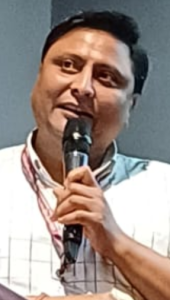
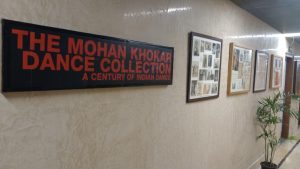

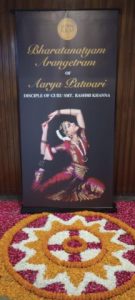
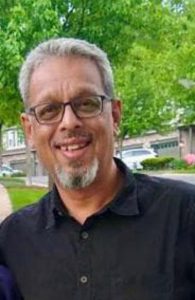
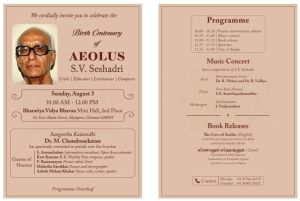

4 Comments
Namaste. Khokarji’s articles are always fascinatingly insightful, delightfully enlightening, and captivatingly articulative is stating the obvious. Those of us who look forward to reading such intricately detailed subject will be left spellbound. If indian diverse classical art forms have any identification among the present generation, the credit largely accrues to Khokarji’s relentless efforts at preserving and propagating the same. Thanks very much Khokarji for keeping the flag flying high.
I felt the warmth and love for each person you wrote. Your energy has travelled so far and touched so many through this writing.
Thank you sir🙏🏻✨😇
‘Harfanmologist’ is a title indeed but ‘Ashishmologist’ is hard to match!I like the easy one to one tone of the writing style ..like one is sitting across a coffee table or walking the talk !Respects to you Ashishji for all that you do and seek to do for the Art and artists!🙏🙏🙏
Dr Lata Surendra
Sir, you have covered so many interesting topics in one article! You’re an encyclopedia, brimming with the most astounding experiences to share…I hope to read your autobiography.
Your yeoman service to the cultural landscape of our country deserves to be documented in a book!
Your eulogy to Mr. Diwakar was heartwarming. No one speaks of a friend(let alone a relative) so fondly, unless there is an ulterior motive.